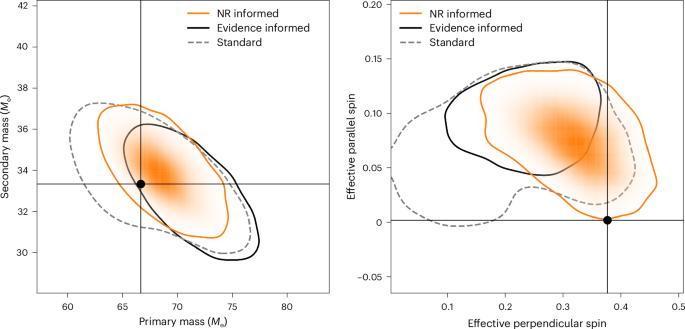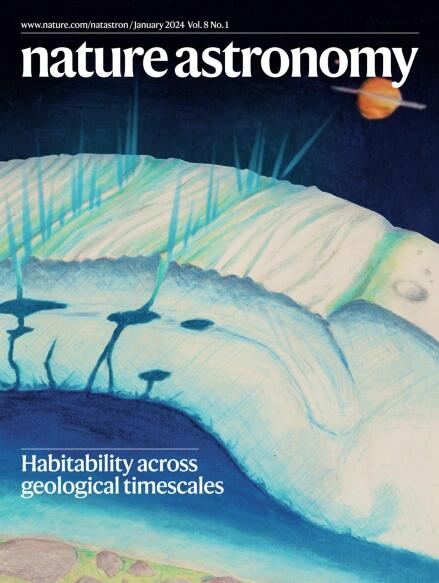引力波贝叶斯推理中模型精度的结合
IF 14.3
1区 物理与天体物理
Q1 ASTRONOMY & ASTROPHYSICS
引用次数: 0
摘要
从引力波观测推断碰撞黑洞的性质会受到建模不确定性引起的系统误差的影响。虽然每个模型的准确性可以通过与广义相对论的理论期望进行比较来计算,但贝叶斯分析尚未纳入这一信息。因此,通常使用混合模型,将不同引力波模型获得的结果与相等的权重或基于它们的相对贝叶斯证据相结合。在这项工作中,我们提出了一种将几种模型的精度纳入引力波贝叶斯分析的新方法。通过分析零噪声条件下的模拟引力波信号,我们的技术比现有技术节省了30%的计算资源,并且更忠实地恢复了真实参数。我们进一步将我们的方法应用于一个真实的引力波信号,并在假设双黑洞假设的情况下,证明了GW191109_010717的源具有不等分量质量,主黑洞质量大于恒星坍缩产生的最大黑洞质量的概率为69%。我们设想这种方法将成为地面引力波天文学的重要工具。本文章由计算机程序翻译,如有差异,请以英文原文为准。


Incorporation of model accuracy in gravitational wave Bayesian inference
Inferring the properties of colliding black holes from gravitational wave observations is subject to systematic errors arising from modelling uncertainties. Although the accuracy of each model can be calculated through comparison to theoretical expectations from general relativity, Bayesian analyses are yet to incorporate this information. As such, a mixture model is typically used where results obtained with different gravitational wave models are combined with either equal weight or based on their relative Bayesian evidence. In this work we present a new method for incorporating the accuracy of several models into gravitational wave Bayesian analyses. By analysing simulated gravitational wave signals in zero noise, we show that our technique uses 30% less computational resources and more faithfully recovers the true parameters than existing techniques. We further apply our method to a real gravitational wave signal and, when assuming the binary black hole hypothesis, demonstrated that the source of GW191109_010717 has unequal component masses, with a 69% probability for the primary being above the maximum black hole mass from stellar collapse. We envisage that this method will become an essential tool for ground-based gravitational wave astronomy. The inclusion of model mismatch information in gravitational wave parameter estimation improves on current model-averaging methods, allowing higher-accuracy inferences about the properties of merging black holes.
求助全文
通过发布文献求助,成功后即可免费获取论文全文。
去求助
来源期刊

Nature Astronomy
Physics and Astronomy-Astronomy and Astrophysics
CiteScore
19.50
自引率
2.80%
发文量
252
期刊介绍:
Nature Astronomy, the oldest science, has played a significant role in the history of Nature. Throughout the years, pioneering discoveries such as the first quasar, exoplanet, and understanding of spiral nebulae have been reported in the journal. With the introduction of Nature Astronomy, the field now receives expanded coverage, welcoming research in astronomy, astrophysics, and planetary science. The primary objective is to encourage closer collaboration among researchers in these related areas.
Similar to other journals under the Nature brand, Nature Astronomy boasts a devoted team of professional editors, ensuring fairness and rigorous peer-review processes. The journal maintains high standards in copy-editing and production, ensuring timely publication and editorial independence.
In addition to original research, Nature Astronomy publishes a wide range of content, including Comments, Reviews, News and Views, Features, and Correspondence. This diverse collection covers various disciplines within astronomy and includes contributions from a diverse range of voices.
 求助内容:
求助内容: 应助结果提醒方式:
应助结果提醒方式:


